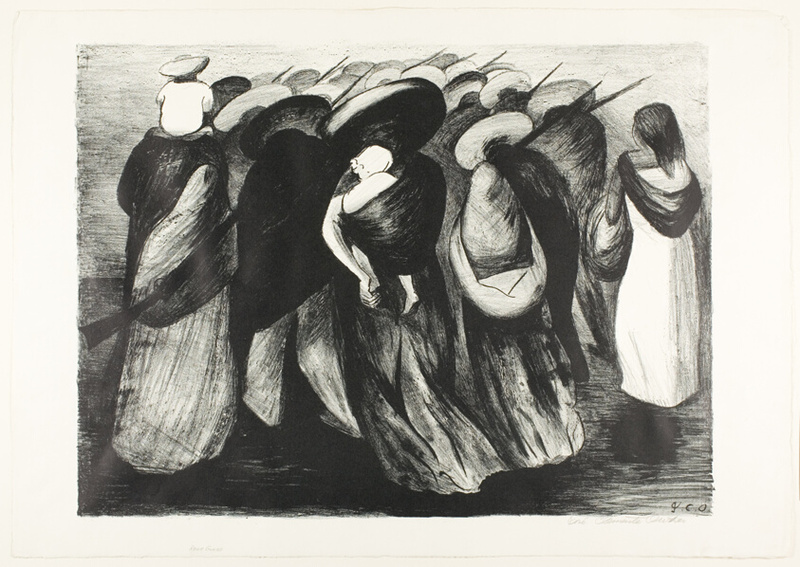José Clemente Orozco, one of the greatest Mexican artists, used his artwork to describe and paint the daily lives of a Mexican peasant during the post- revolutionary war. The purpose of the exhibit is to display José Clemente Orozco artwork and demonstrate how hard the Mexicans' lives were. The post- revolutionary war caused Mexican peasants to lose their home, land, food, and their purpose. The Mexicans were demanded and encouraged to join the war to gain a better lifestyle; one that provided support.
The goal of this exhibit is to show and explain the nations’ identity of Hispanic and Mexican heritage. The artwork will show how the people came together to work and display their culture. For example, one of the artworks shows how both women and men joined the guard (rear guard). This artwork shows that the peasants are working together to protect and gain a better future for their families and country. The nations’ identity of Hispanic and Mexican heritage is explained through their culture and lifestyle. “Many Mexican artists put great faith in the centrality of culture within revolutionary struggles”, meaning the artist Orozco uses art to show the Mexican peasant's struggles.
Another goal is to show the impact that war has on an individual and community. An example is Ruined House, it shows a family devastated; siting, standing, and laying outside because they lost their home and land. This artwork shows how war can impact everyone, but especially the peasant life.
To sum up, the big idea of this project is to explain and show the struggle and nation's identity using José Clemente Orozco artwork. The exhibit is used to gain knowledge and learn more about Mexican culture during the post-revolutionary period. As well, the exhibit wants to connect the audience to the artwork, to show how hard these people tried to live. The artwork will inspire individuals, especially minorities, to display their artwork so it can have an impact someone and the future.

